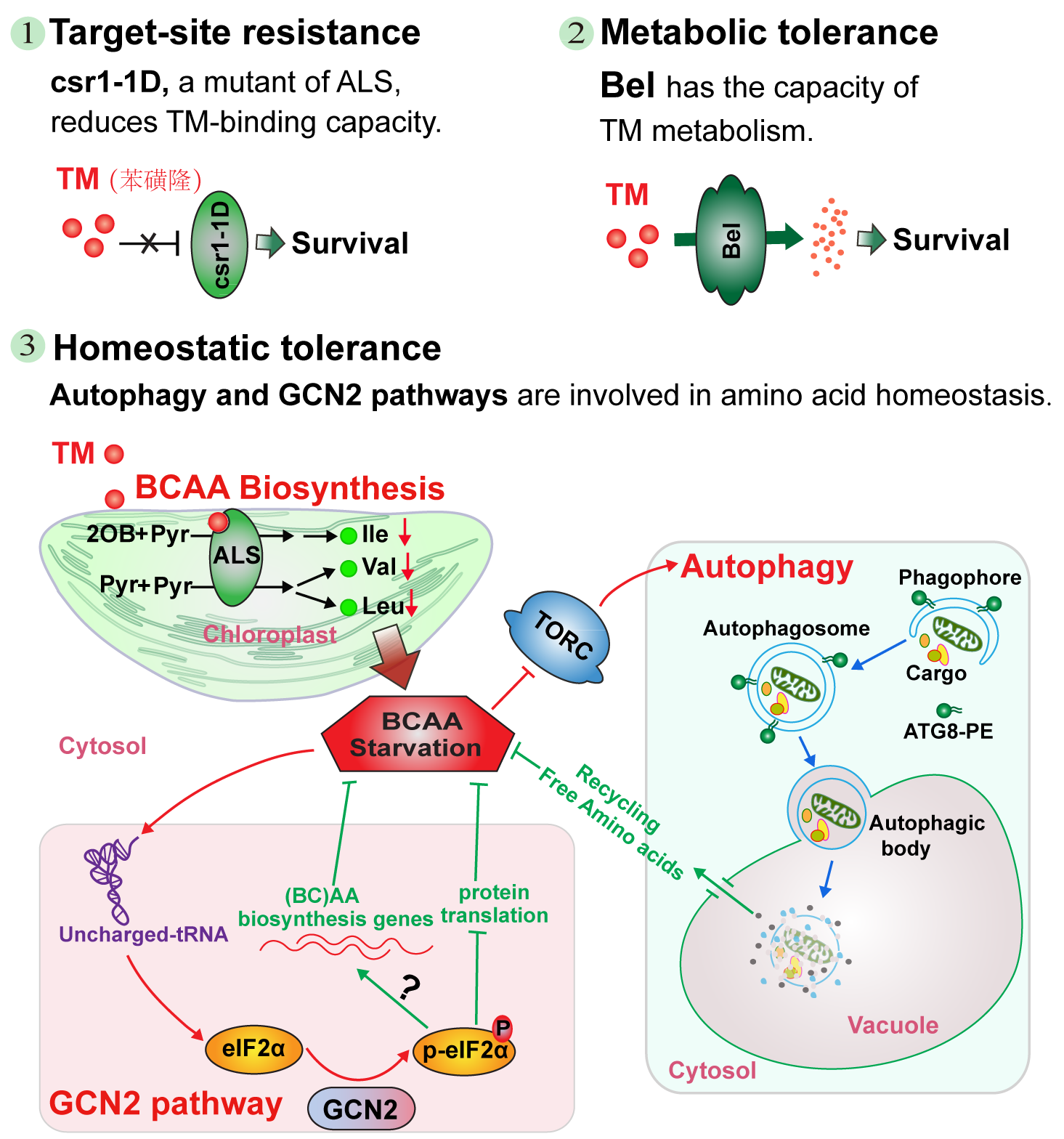Core Tip: In January 2018, Autophagy, an internationally renowned journal, published the research progress of the plant herbicide tolerance mechanism and amino acid signal pathway research carried out by Tingdong Fu academician of HZAU. Earlier, the internationally renowned periodical Molecular Plant published the academician’s progress in the chemical killing mechanism of rapeseed. The two studies described two game stories of plants and the herbicide tribenuron.
Recently, The achievements of the plant herbicide tolerance mechanism and amino acid signal pathway researched by the rapeseed team of HZAU was published on Autophagy.The journal is an international authoritative publication on autophagy research, and the paper entitled “Autophagy contributes to sulfonylurea herbicide tolerance via GCN2-independent regulation of amino acid homeostasis”. Dr. Lun Zhao and Dr. Li Deng, who are PhD students from Plant Science and Technology College, are the first author, Prof. Jinxiong Shen is the corresponding author. Earlier, Molecular Plant published a paper entitled “Tribenuron-methyl induces male sterility through anther-specific inhibition of acetolactate synthase leading to autophagic cell death”, which studied the chemical killing mechanism of rapeseed. Dr. Lun Zhao is the first author, Prof. Jinxiong Shen is the corresponding author.
Chemical amphetamine-induced male abortion is one of the important approaches for utilization of heterosis in oilseed rape, which has been widely used in rapeseed production practice. Tribenuron is a sulfonylurea, high dose of which is an efficient herbicide while low dose of which is an ideal rapeseed chemical killer.
Studies have shown that tribenuron-methyl of leaf spraying is absorbed via mesophyll and microtubule tissues and is accumulated in anthers by polar transportation, specifically inhibiting acetolactate synthetase in anthers, resulting in the lack of branched-chain amino acids in the anthers. The persistent lack of branched-chain amino acids induces excessive autophagy of the tapetum and microspore cells, eventually leading to abortion of the pollen (Figure 1). Cell death caused by excessive autophagy is called autophagic cell death. The discovery of autophagic cell death in anther cells has deepened people's understanding of cell death.
Autophagy is a double-edged sword, excessive autophagy causes damage to cells. As described above, tribenuron-methyl induces autophagic cell death of anther cells.Moderate autophagy is an important basic mechanism of the cell to maintain homeostasis and to respond to both intracellular and extracellular stress. This study not only found that autophagy has the function of degrading self-substances to regulate the balance of amino acid, but GCN2 (General control nonderepressible 2) has the function of regulating amino acid gene expression or protein degradation to maintain amino acid balance, both of which contribute to tribenuron-methyl tolerance. The relationship between rapamycin target protein, autophagy and GCN2 in the amino acid signal transduction pathway has also been systematically described. The herbicide tolerance mechanism produced by autophagy and GCN2 is different from the “target resistance” and “metabolic tolerance” that scientists have discovered. We call this new type of herbicide tolerance mechanism as the “homeostatic tolerance”. (figure 2). The article discussed the relationship among target resistance, metabolic tolerance and homeostasis resistance, enriching people's understanding of the herbicide resistance mechanism and providing a theoretical basis for the practical application of steady-state tolerance.

